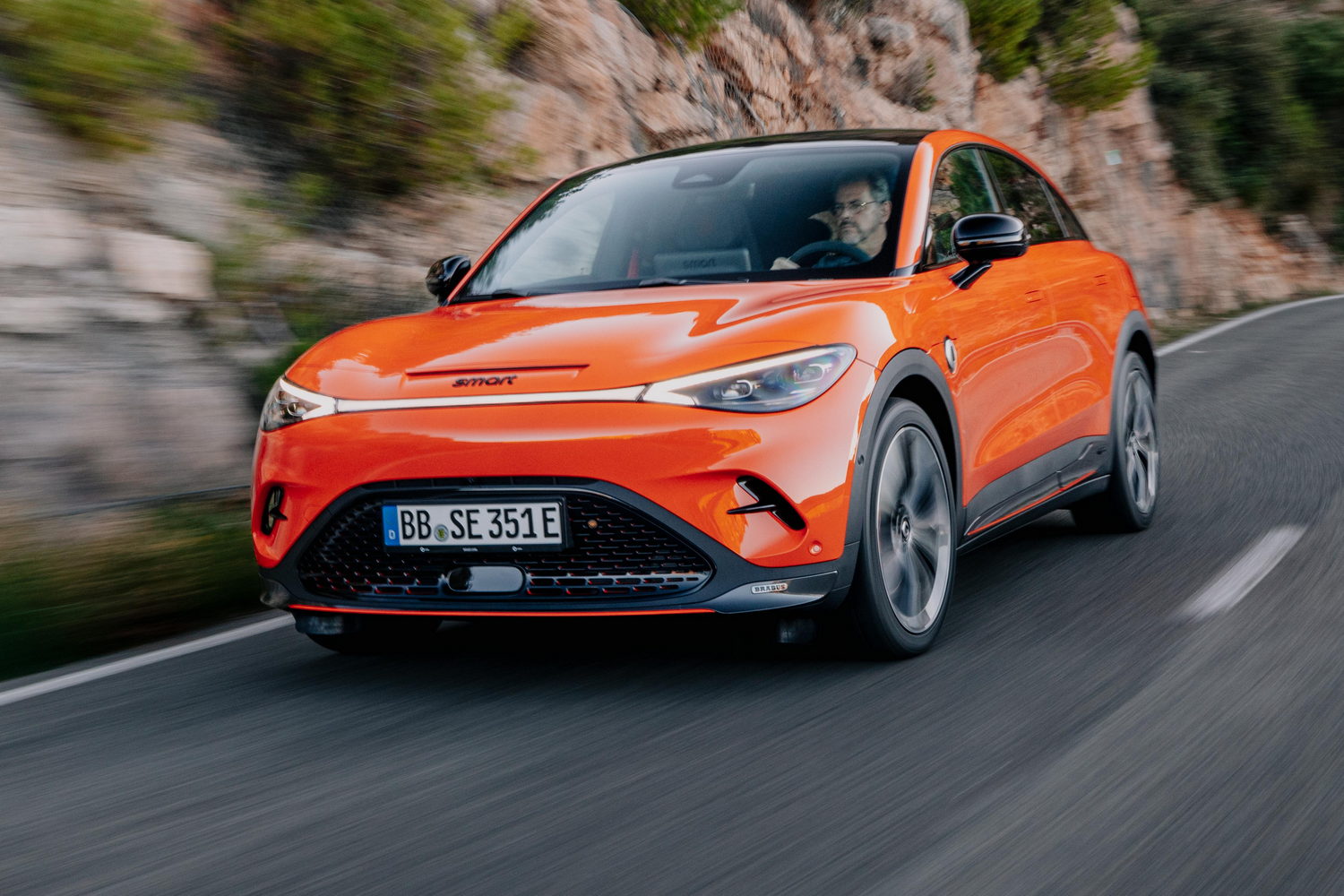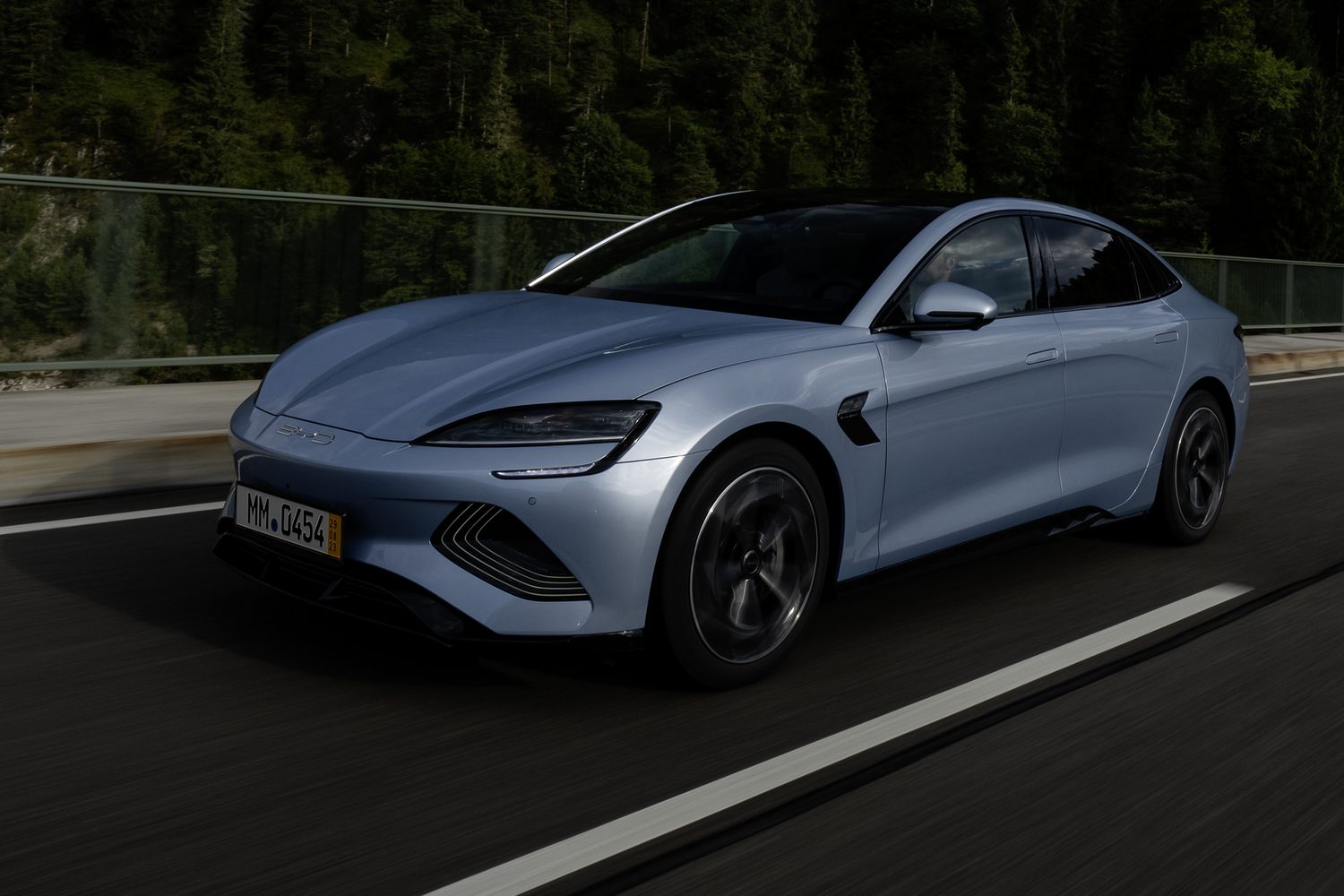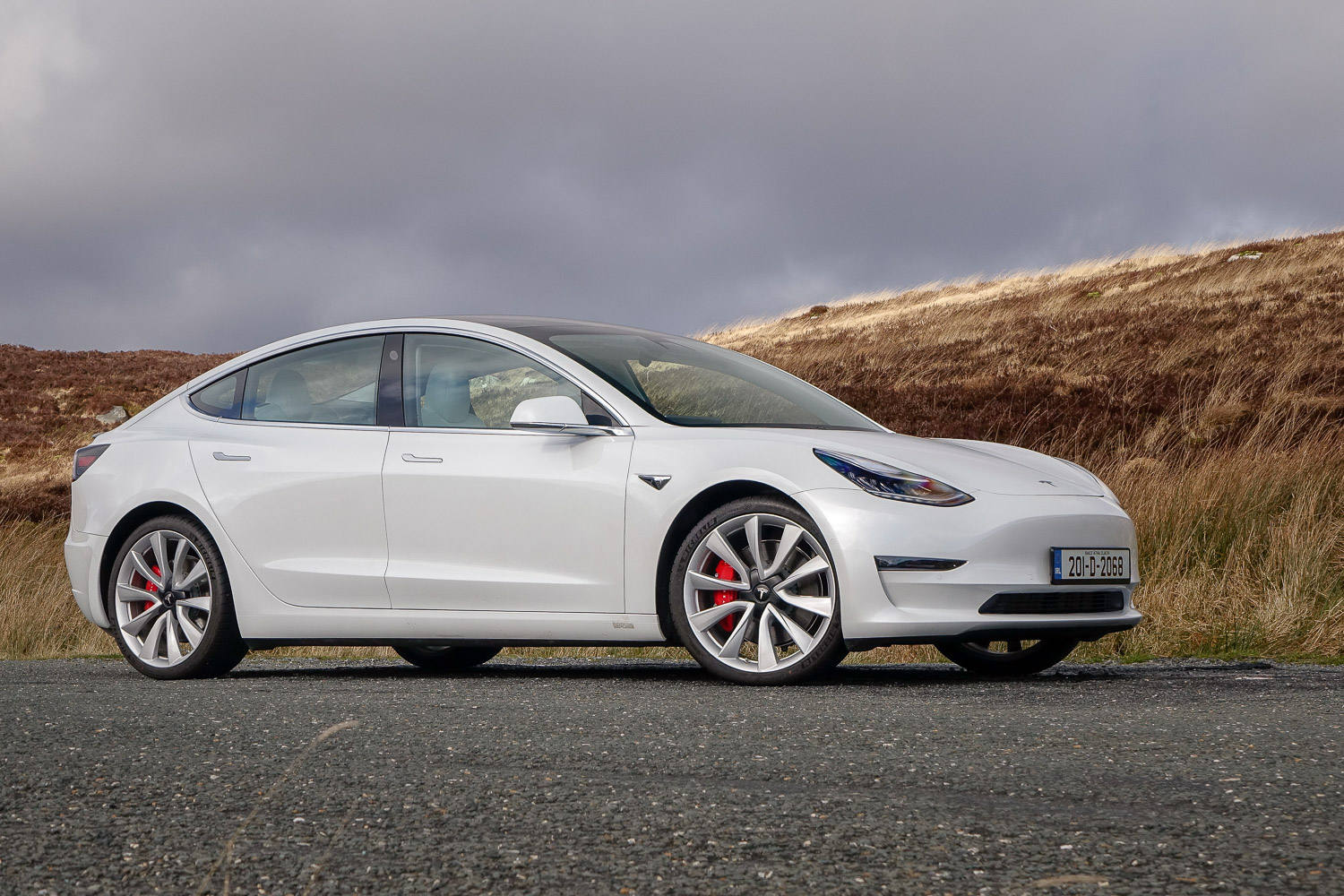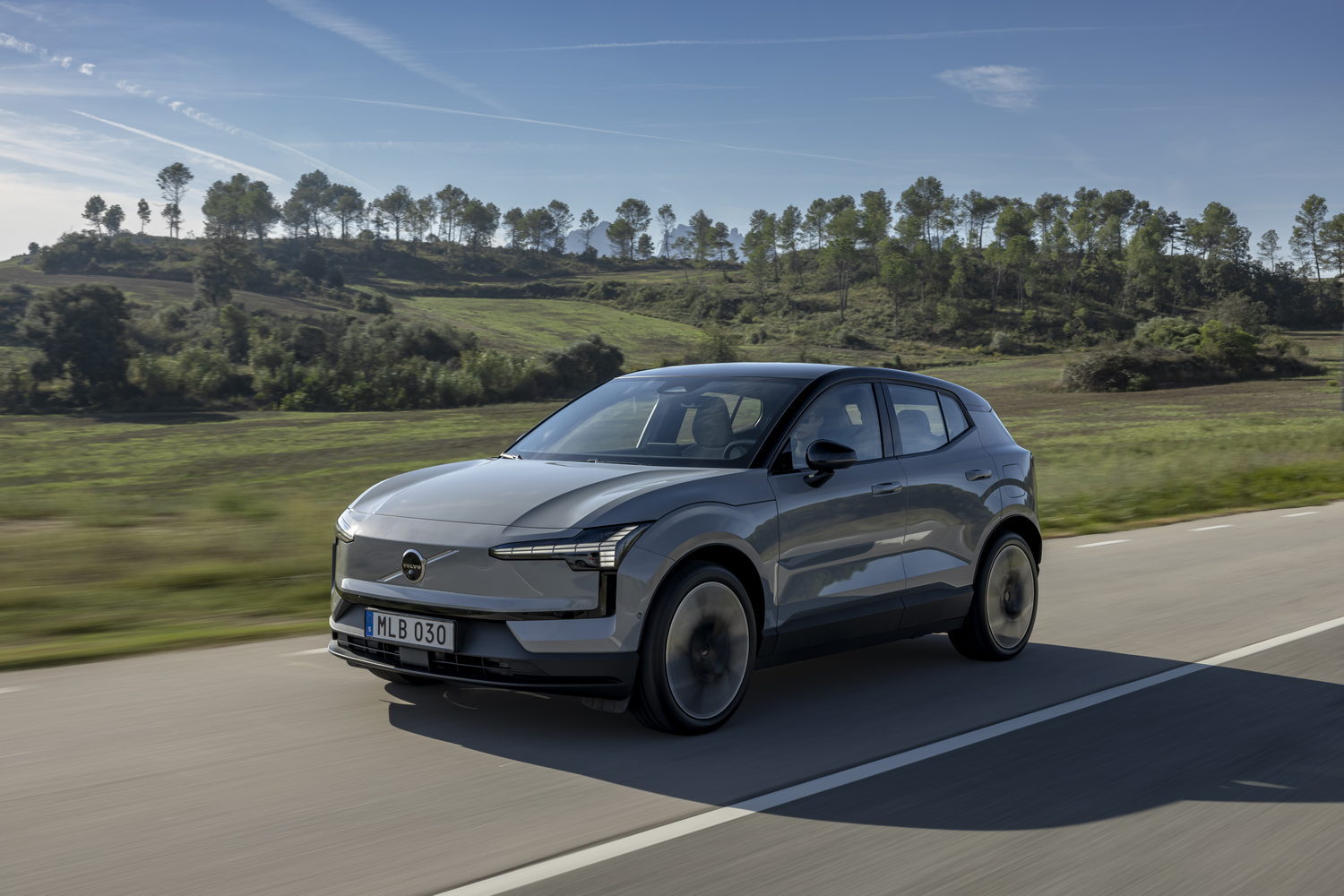For anyone wanting to know what or who Brabus is, the company - established in 1977 in Germany by friends Bodo Buschmann and Klaus Brackmann - began by modifying Mercedes models for higher performance. And when we say high, we mean really high. Brabus has been known to stuff a 6.3-litre V12 into a C-Class, or a 7.3-litre V12 into an E-Class. The company's standard of work is so good that the cars all come with Mercedes factory warranties, and both Michael Schumacher and Cristiano Ronaldo have been Brabus owners in the past. The firm also restores classic Mercedes models to an incredibly high standard, and in 2001 the company set up a joint venture with Mercedes to tune and tweak Smart models for sale through official channels, a collaboration which continues today.
As with the taller Smart #1, Brabus-spec means four-wheel drive, and a lot more power. The price, aside from the financial cost, comes in range as the Brabus version won't go as far as the regular #3. Is that compromise worth it?
In the metal
You're going to have to work hard to spot the new Smart #3 Brabus and tell it apart from its lesser brethren. The exterior differences are tiny in the extreme, but there is one giveaway - at the front, the Brabus version gets an extra little air intake in the edge of the bonnet, almost a size-zero tribute to the honking great air intakes of Subaru Imprezas and Mitsubishi Evos of old. And make no mistake, that's the kind of performance that we're talking about here.
If the exterior of the #3 Brabus is subtle - there are also some very small Brabus badges on the outer edges of the front bumpers, and 20-inch alloy wheels compared to the standard 19-inch rims - then the interior is a little more definitively Brabus-y. There are big Brabus 'B' logos stitched into the headrests, a Brabus logo on the steering wheel, red seatbelts and black microfibre upholstery with red contrast stitching. There's also a Beats stereo system with backlit tweeters in the A-pillars.
As with the standard #3, it's pretty nice in the Brabus. The high-backed bucket seats are excellent, and the dashboard is neatly laid out with a useful nine-inch digital display nestling behind the wheel, backed up by the head-up display shining on the windscreen. There's good space in the back seats too, with surprising amounts of legroom and headroom, but the boot - 370 litres is its capacity - is a bit disappointing, ditto the tiny 15-litre 'frunk.'
Sadly, as with the standard model, the 12.8-inch central touchscreen will drive you nuts with its heinous menu layout, and its constant bonging at the slightest twitch of your head away from the forward-facing position or the faintest brush of 1km/h over the posted limit (not that the speed limit system usually knows what the correct speed limit is in a given area).
Driving it
The standard Smart #3, with is 272hp electric motor powering the rear wheels, is a pretty rapid car as it stands - 5.8 seconds for 0-100km/h is not slow in anyone's book. The Brabus? That's on another level entirely.
Call up the full 428hp and 543Nm (200Nm more than the rear-drive #3) from both electric motors and the #3 Brabus will scamper to 100km/h in just 3.7 seconds - that's proper Ferrari pace, and because the torque arrives all at once, it's enough to make you feel quite queasy at times. Your family will not thank you for doing this.
In some other electric cars with this kind of potent performance, you get your straight-line thrills and then there's nothing in the way of superior handling to back it up. The #3 Brabus is better than that, although don't go expecting a transformation of the #3's dynamic performance.
The key is to go to the (still dreadful) touchscreen and flick the little shortcut button that selects the driving modes. You get the usual Eco, Comfort and Sport modes but in true Spinal Tap tradition, the Brabus goes one louder, with a specific Brabus driving mode. This does, to its detriment, further sharpen response to the accelerator, which can make this #3 feel more than a touch demented at times, as it tries to accelerate hard into the back of a bus that's in front of you when all you wanted to do was gain a few km/h.
However, it's worth getting your right ankle used to dealing with this, as Brabus mode unlocks a much better steering setting. The #3 has notably dead and numb steering in standard form, but Brabus mode, while it doesn't suddenly provide proper finger-tingling feel and feedback, does alter with the weight and speed of the steering, and it suddenly feels... nice. Not perfect, by any means, but definitely better and it allows you to tune into the car a bit more on a twisty road. Mind you, the weight (and the Brabus is carrying an extra 100kg, totalling 1,910kg, compared to the rear-drive #3) will eventually scupper most of your fun, but up to its limits, the Brabus version of the #3 certainly feels a bit more playful and a bit more engaging.
It's not even that much less efficient in the real world than the rear-drive version. We saw observed energy consumption of 20kWh/100km in the Brabus, compared to 18kWh/100km in the rear-drive #3, so it's not going to break the bank when it comes to charging, even if the official 415km range isn't exactly going to wave away all your range anxiety concerns.
The ride quality is certainly stiffer, with those 20-inch alloys, but we were testing the #3 Brabus on the smooth roads of Mallorca, so we need some time on proper Irish tarmac to get a true feel for how comfortable, or otherwise, it might be.
What you get for your money
Smart Ireland (part of Motor Distributors Limited, also the Mercedes and BYD importers for the Irish market) hasn't published #3 prices yet, but there's a good chance that it will clock in at less than €50,000 here, which is good considering the supercar-slaying performance on offer. As standard, you get the heated and electrically-adjustable bucket seats, the Beats stereo, the 12.8-inch touchscreen, the nine-inch driver's display, a head-up display, 20-inch alloys and 150kW DC charging for the battery.
Summary
The Smart #3 Brabus is genuinely fast and furious, and in the right driving mode, on the right road, can be much more entertaining than the standard #3. However, it will be more expensive (of course), and it does come with 40km less range. Worth it? Actually, yes...

































